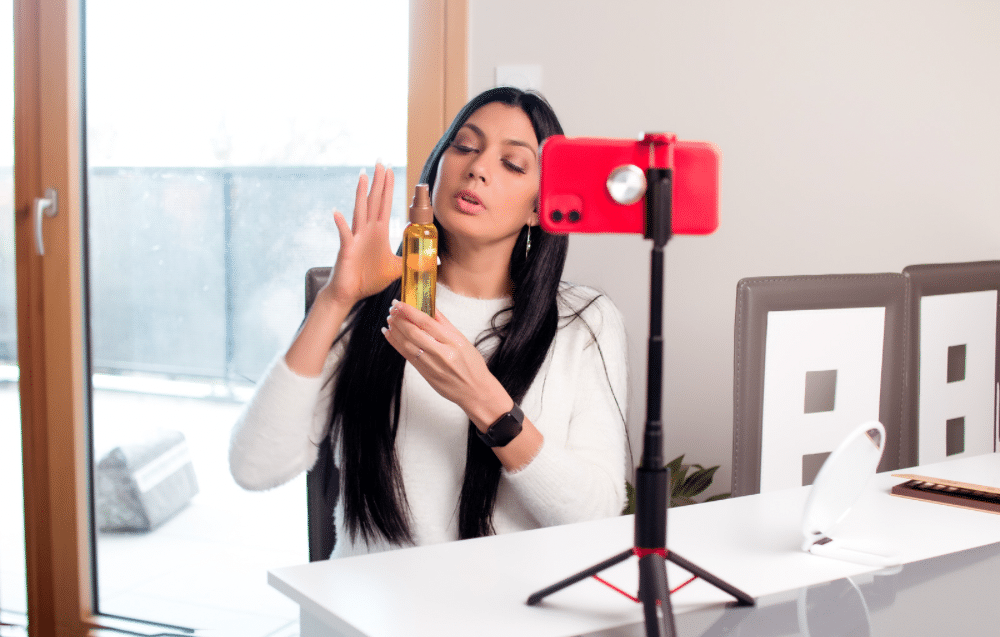Influencer Marketing Tips for 2024

Love it or hate it, influencer marketing is here to stay — and influencers’ marketing power is growing exponentially worldwide. More than 100,000 TikTok influencers promote products to their niche audiences in the United States alone, cleverly weaving brand partnerships into their content… for a price.
This blog post delves into the current landscape of influencer marketing, exploring various types of influencers, their role in brand promotion, and the evolving trends set to define the industry in 2024. Join us as we examine what influencer marketing is all about.
Benefits of Influencer Marketing

When done correctly, influencer marketing is a powerful strategy with numerous benefits for brands looking to enhance their online presence. That’s why 1 in 4 marketers embraced this trend in 2023.
Here are some key advantages:
- Broader audience: Leveraging influencers allows brands to tap into their follower base, introducing your products or services to a new audience.
- Increased brand visibility: Collaborating with influencers boosts your brand’s visibility across platforms like TikTok, Instagram, and YouTube, reaching potential customers you may have yet to connect with via traditional advertising.
- More buzz on social media: Influencers create excitement and engagement around their partner brands, generating discussions and interactions among their followers.
- Increased website traffic: Influencers drive traffic and potentially increase conversions by directing their followers to your website, boosting your overall online presence.
- Product virality: Well-executed influencer campaigns can help your products “go viral,” rapidly gaining attention and interest among a vast online audience.
- Increased brand recognition: Consistent exposure through influencers contributes to heightened brand recognition and awareness, establishing a stronger presence in the minds of consumers.
What Does an Influencer Do?
You’ve no doubt seen popular influencer content pop up on your screen. Brands in just about every niche, from Dunkin’ Donuts to Dior, market via influencer campaigns. But what exactly is an influencer’s job? The key roles of an influencer include:
- Creating content for social media featuring your product: Influencers craft engaging videos and posts showcasing your products, effectively communicating their features and benefits to their audience.
- Promoting affiliate marketing: Many influencers engage in affiliate marketing, encouraging their followers to make purchases using unique discount codes, creating a win-win situation for both the influencer and the brand.
- Sharing genuine content and recommendations: Partnering with influencers who align with your brand ensures authentic content and recommendations, fostering a sense of trust among their followers.
Types of Influencers

Influencers come with diverse follower counts and content niches, catering to different audience segments. They can be categorized by:
Size:
- Nano: Influencers with a smaller but highly engaged audience of 10,000 followers or less.
- Micro: Mid-sized influencers with a more substantial follower base of up to 100,000 followers.
- Macro: Influencers with a large and potentially widespread audience of 1,000,000 followers or less.
- Mega: Major celebrities with 1,000,000 followers or more. Currently, the most followed person on Instagram is footballer Cristiano Ronaldo, with 618 million followers!
Unsurprisingly, the price to work with an influencer rises with their follower count. Typical nano-influencer posts won’t cost more than $250. Mega-influencers like Kylie Jenner might charge more than $1 million.
Niche:
- Travel
- Finance, Career, Life
- Beauty, Skincare
- Fashion
- Sustainability
Make sure to work with influencers whose target audiences overlap with yours.
How Will Influencer Marketing Change in 2024?
This year, influencer marketing is poised to undergo significant changes driven by evolving consumer preferences:
- Consumers seek genuine influencers: Trust has become paramount, with consumers more likely to make purchases from influencers they trust authentically.
- Shift towards authenticity: The focus is shifting from mere “influencing” to a more authentic approach, where genuine connections and content resonate with audiences.
- Demand for transparency: Consumers are increasingly demanding transparency in advertising, emphasizing the need for influencers to disclose paid partnerships, avoiding any perception of deception.
- Emphasis on working with smaller creators: Brands are recognizing the value of collaborating with smaller creators, especially benefiting small to medium-sized businesses seeking authentic connections with their audience.
Keep these ideas in mind when selecting influencers to represent your brand.
Are Influencers Right for your Brand?

Whether or not you should try influencer marketing depends on your brand’s goals and target audience. While influencers may have a more substantial follower base, smaller content creators may offer more creative freedom and authenticity. Striking the right balance is key to a successful influencer marketing strategy in 2024.
We’ve found that brands’ existing customers often see better engagement and higher ROI. So, consider brand ambassadors as another great source of user-generated content and referral sales.
Whether you decide to try influencer marketing, a brand ambassador program, or a hybrid option, BrandChamp can help! Please reach out to us to try out our streamlined software designed to help manage all kinds of ambassador, affiliate and advocacy programs.





